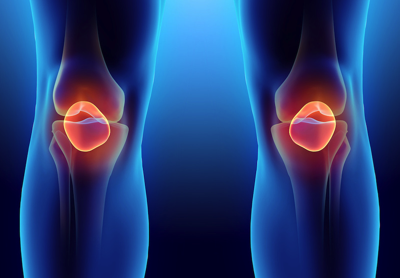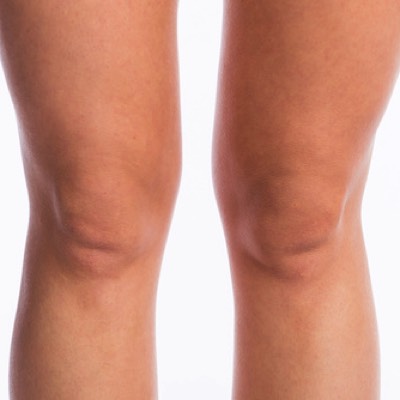What do Ground Reactive Forces have to do with Shooting?
From the perspective of an individual who refuses to believe that just chance will determine ones future, I am intrigued with physics and have found the Intuitive Defensive Shooting program insightful in several ways. I have a grounded feeling that there is a truth that through the acknowledgment of physics and intuition we can have a purposeful affect upon our own lives. Plus, I would like to introduce how Ground Reactive Forces can improve performance.
Some know me as a pitching coach, some as a distance shooter, some as craftsman, some as a businessman/entrepreneur, and others know me as an instructor/trainer. While I am all of these, there are just a couple of things that tie all of these descriptions together. Safety & efficiency are the common thread.
"It is these things that are of great importance and help me to understand what intent is brought to bear for my personal meaningful life".
When I began shooting a bolt rifle, and later learning to reload, immediately it was apparent that given forces were at play. All I needed to do to be successful was to learn what the variables were and then play in that playground. So I began a journey into ballistics. Ballistics is simply the science of the propulsion of an object. In this case the object in question was a bullet. Thousands of hours later, and with the help of some of the finest shooters, coaches and mentors in the country, I was able to achieve some level of success that some would have thought was unattainable at such a fast rate.
When I began learning of high velocity baseball pitching, I instinctively knew that there must be science behind the propulsion of the object. Put another way; what ballistics are in play that cause a baseball to be propelled at such an unbelievable velocity? Why are some pitchers better at it than others? Why are some injured at a higher rate than others? Ultimately, why are some more successful than others? My search led me to the very details of the forces at play. How the human body uses the force created with the ground. These forces we will call Ground Reactive Forces or "GRF". How the biomechanics of an athlete are used to create these force. Plus, how these forces ultimately can be used to save a pitchers arm and make him more effective and safer on the field of play.
I would like to share some things that I learned at a recent Intuitive Defensive Shooting training event instructed by GTBR instructors Rob Jennings, Mike Sisk, and Rick Watkins (more about them here: https://www.gettrainedbeready.com/instructor-team/). I became factually informed on what some of the nuances are that separate skilled and aware individuals from those that are not skilled and are maybe even unaware of what true skill is, in regards to pistol handling and safety. Again, note one common tie for me is safety. Questions were answered about how proficiency and skill improved safety for self and others. As if that wasn't enough, I noted the effect of ballistics. How a firearm recoils and is managed directly affects a bullets accuracy and speed for follow up shots. IDS leaves no doubt as to what the correct methodology and mechanics are in regards to controlling recoil to achieve combat accuracy.
What might I bring to the table not currently spoken of or taught? One of the fundamental elements of this training is the need to be in an athletic position, knees bent and shoulders out front, with arms extended position for firing. What about the GRF that we spoke about earlier? Does GRF play a role in these fundamentals?
I believe GRF does play role in the fundamentals of shooting and I will be specific as to why. First, when making the comparison between the ready position of an athlete or a shooter there is a commonality. The activation of the bending of the knees and the engagement of the glutes that assist in, not only athletic lower and upper body movement and control, but also in the central nervous systems recognition that a fight or event is in play. This recognition is paramount and discussed in the curriculum of IDS. However, as an athletic trainer, I note that some people use this athletic position better than others. Specifically, when bending of the knees, some have an inward pronation of the knees.
"It is these things that are of great importance and help me to understand what intent is brought to bear for my personal meaningful life".
When I began shooting a bolt rifle, and later learning to reload, immediately it was apparent that given forces were at play. All I needed to do to be successful was to learn what the variables were and then play in that playground. So I began a journey into ballistics. Ballistics is simply the science of the propulsion of an object. In this case the object in question was a bullet. Thousands of hours later, and with the help of some of the finest shooters, coaches and mentors in the country, I was able to achieve some level of success that some would have thought was unattainable at such a fast rate.
When I began learning of high velocity baseball pitching, I instinctively knew that there must be science behind the propulsion of the object. Put another way; what ballistics are in play that cause a baseball to be propelled at such an unbelievable velocity? Why are some pitchers better at it than others? Why are some injured at a higher rate than others? Ultimately, why are some more successful than others? My search led me to the very details of the forces at play. How the human body uses the force created with the ground. These forces we will call Ground Reactive Forces or "GRF". How the biomechanics of an athlete are used to create these force. Plus, how these forces ultimately can be used to save a pitchers arm and make him more effective and safer on the field of play.
I would like to share some things that I learned at a recent Intuitive Defensive Shooting training event instructed by GTBR instructors Rob Jennings, Mike Sisk, and Rick Watkins (more about them here: https://www.gettrainedbeready.com/instructor-team/). I became factually informed on what some of the nuances are that separate skilled and aware individuals from those that are not skilled and are maybe even unaware of what true skill is, in regards to pistol handling and safety. Again, note one common tie for me is safety. Questions were answered about how proficiency and skill improved safety for self and others. As if that wasn't enough, I noted the effect of ballistics. How a firearm recoils and is managed directly affects a bullets accuracy and speed for follow up shots. IDS leaves no doubt as to what the correct methodology and mechanics are in regards to controlling recoil to achieve combat accuracy.
What might I bring to the table not currently spoken of or taught? One of the fundamental elements of this training is the need to be in an athletic position, knees bent and shoulders out front, with arms extended position for firing. What about the GRF that we spoke about earlier? Does GRF play a role in these fundamentals?
I believe GRF does play role in the fundamentals of shooting and I will be specific as to why. First, when making the comparison between the ready position of an athlete or a shooter there is a commonality. The activation of the bending of the knees and the engagement of the glutes that assist in, not only athletic lower and upper body movement and control, but also in the central nervous systems recognition that a fight or event is in play. This recognition is paramount and discussed in the curriculum of IDS. However, as an athletic trainer, I note that some people use this athletic position better than others. Specifically, when bending of the knees, some have an inward pronation of the knees.
Over pronation can lead to poor performance while shooting IDS or any other standing shooting drills. One may pronate because of a lack of understanding, training, or weakness and or mobility. I will address the fix in the following few sentences.
After recognition of such a problem, or as a matter of being proactive the following advice can be given. First step forward about one to two feet with one of your legs. Now, simply turn your knee to the outside without allowing your hips to rotate outward. Next, step forward with the other leg and try the same exercise. Then, with both feet placed approximately shoulder width apart turn both knees to the outside. Note that there is no need to put so much stress on the joints as to cause harm. This exercise is simply to teach an athletic movement that is innate to some, but not to all. Now, while keeping tension, lets call it lower body torsion, bend at the knees. You will note that your athletic position has improved and with a starting at the bottom approach, the other skills you have and are learning will improve as well. Also, GRF will improve as you work on recoil mitigation.
Some causality of the above pronation may actually be poor hip mobility. We simply just sit to much. This causes the hip flexors to become insufficient in our day to day needs. There are many professionals who can help with this problem. Physical Therapist and USAW Sports Trainers are a good place to start.
Steve Jones is one of our instructors. You can find out more about him on our instructors page.
Come train with us: https://www.gettrainedbeready.com/calendar/


